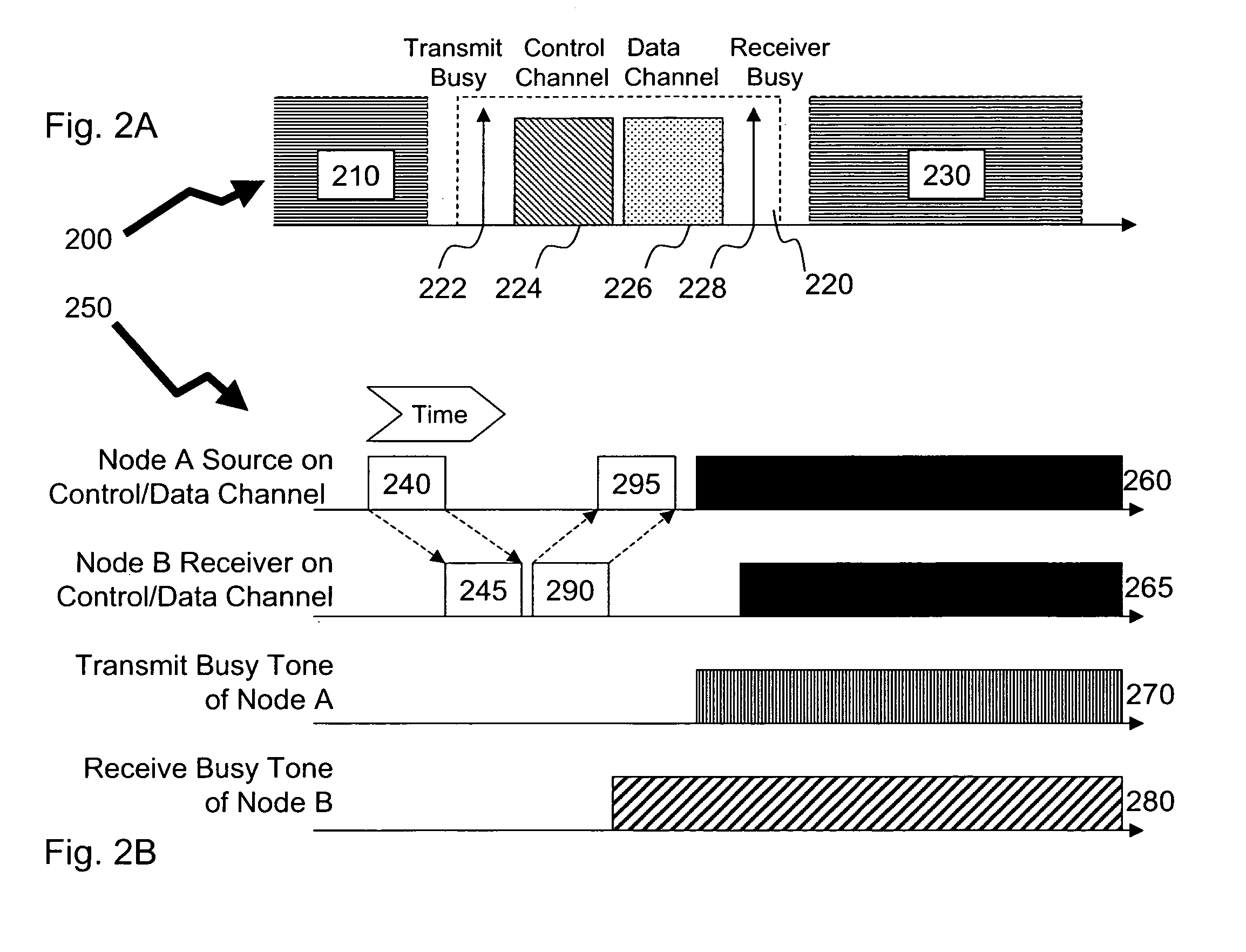Tone based congnitive radio for opportunistic communications
a congnitive radio and opportunistic technology, applied in the field of wireless communications, can solve the problems of inefficiency in the allocation and operation of spectrum resources, and the scarcity of radio spectrum resources to support the emerging commercial and/or scientific applications of wireless communications
- Summary
- Abstract
- Description
- Claims
- Application Information
AI Technical Summary
Problems solved by technology
Method used
Image
Examples
Embodiment Construction
[0031]Today typically users operating wireless devices interface to a wireless network that comprises a plurality of wireless hubs, base stations, interfaced to and interconnected by a wired infrastructure. The connections of wireless devices to these base stations are controlled by the Medium Access Control (MAC) data communication protocol sub-layer, also known as the Media Access Control, is a part of the data link layer specified in the seven-layer OSI model (specifically layer 2). MAC provides addressing and channel access control mechanisms that makes it possible for several terminals or network nodes to communicate within a multipoint network, typically a local area network (LAN) or metropolitan area network (MAN). Examples of medium access control that may be used in packet radio wireless networks are Carrier Sensing Multiple Access With Collision Avoidance (CSMA / CA), Time Devision Multiple Access (TDMA), Frequency Devision Multiple Access (FDMA), Code Division Multiple Acce...
PUM
 Login to View More
Login to View More Abstract
Description
Claims
Application Information
 Login to View More
Login to View More - R&D
- Intellectual Property
- Life Sciences
- Materials
- Tech Scout
- Unparalleled Data Quality
- Higher Quality Content
- 60% Fewer Hallucinations
Browse by: Latest US Patents, China's latest patents, Technical Efficacy Thesaurus, Application Domain, Technology Topic, Popular Technical Reports.
© 2025 PatSnap. All rights reserved.Legal|Privacy policy|Modern Slavery Act Transparency Statement|Sitemap|About US| Contact US: help@patsnap.com



